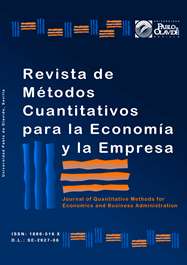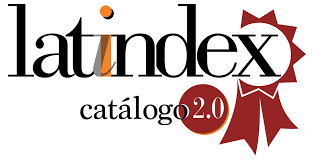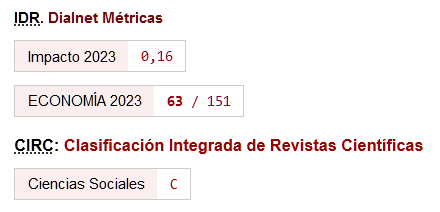Comparative analysis of agreggate planning models. The case of the colombian manufacturing companies
DOI:
https://doi.org/10.46661/revmetodoscuanteconempresa.3946Keywords:
aggregate planning, goal programming, mixed intenger programming, linear programming, forecasting, management coefficientsAbstract
The primary intention of this article is to perform a comparative analysis between capacity planning strategies of Colombian manufacturing companies. The plans are designed based on the application of mathematical programming techniques. From the results obtained, it is concluded that the most reliable alternative to solve the aggregate planning problem is that based on the transportation method, since it satisfies the requirements of the demand and does not violate the restrictions of the production system. The implementation of the plan allows to program stocks in stock, the size of the workforce, as well as the investment levels. These factors are important to adjust the response rate of the company in a specialized market. The aggregate plan coordinates tactical operations and projects the necessary resources to establish an optimal balance between supply and demand.
Downloads
References
Albornoz, V., Bravo, D., & Ortiz-Araya, V. (2015). Plan jerárquico de producción en una cadena de suministro con productos de demanda estacional. DYNA Management, 3(1), 1-15. https://doi.org/10.6036/MN7646
Arredondo, G., Ocampo, K., Orejuela, J., & Rojas, C. (2017). Modelo de planeación y control de la producción a mediano plazo para una industria textil en un ambiente make to order. Revista Ingenierías, 16(30), 169-193.
Cepeda, E., Corrales, M., Cifuentes, M., & Zarate, H. (2016). On Gamma Regression Residuals. Journal of The Iranian Statistical Society , 15(1), 29-44.
Corrales, M., & Cepeda, E. (2015). Gamma regression models with the Gammareg R package. Comunicaciones en Estadística, 8(2), 211-223.
Chapman, S. (2006). Planificación y control de la producción (Primera ed.). México DF: Pearson Education.
Gansterer, M. (2015). Aggregate Planning and Forecasting in Make-to-Order Production Systems. International Journal of Production Economics, 170, 521-528.
Garzón, H., Solana, J., & Rahmer, B. (2017). Análisis comparativo de modelos de planeación agregada de las ventas y operaciones: Estudio de caso para la empresa Cartagenera de Icopores S.A. Avances en Investigación de Operaciones y Ciencias Administrativas (pp. 145-151). Barranquilla.
Krajewski, L., Ritzman, L., & Maholtra, M. (2008). Administración de Operaciones: Procesos y cadena de Valor (Octava ed.). México: Pearson Education.
Madadi, N., & Yew Wong, K. (2013). A deterministic aggregate production planning model considering quality of products. IOP Conference Series: Materials Science and Engineering, 46, 1-11.
Mansoureh, F., & Shirouyehzad, H. (2014). Proposing an Aggregate Production Planning Model by Goal Programming Approach, a Case Study. Data Envelopment Analysis and Decision Science, 1-13.
Mékidiche, M., Mouslim, H., & Sahed, A. (2013). Application of tolerance approach to fuzzy goal programming to aggregate production planning. International Journal of Mathematics in Operational Research, 5(2), 183-204.
Noegraheni, E., & Nuradli, H. (2016). Aggregate Planning to Minimize Cost of Production in Manufacturing Company. Binus Business Review, 7(1), 39-45.
Sipper, D., & Rober L.B. (1998). Planeación y Control de la Producción (Primera ed.). México D.F: McGraw Hill.
Solera, Á. (2000). Criterios para la selección de modelos estadísticos. Costa Rica: Departamento de Investigaciones Económicas, Banco Central de Costa Rica.
Taha, H.A. (2012). Investigación de Operaciones (Novena ed.). México D.F.: Pearson Education.
Downloads
Published
How to Cite
Issue
Section
License
Copyright (c) 2021 Journal of Quantitative Methods for Economics and Business Administration

This work is licensed under a Creative Commons Attribution-ShareAlike 4.0 International License.
Submission of manuscripts implies that the work described has not been published before (except in the form of an abstract or as part of thesis), that it is not under consideration for publication elsewhere and that, in case of acceptance, the authors agree to automatic transfer of the copyright to the Journal for its publication and dissemination. Authors retain the authors' right to use and share the article according to a personal or instutional use or scholarly sharing purposes; in addition, they retain patent, trademark and other intellectual property rights (including research data).
All the articles are published in the Journal under the Creative Commons license CC-BY-SA (Attribution-ShareAlike). It is allowed a commercial use of the work (always including the author attribution) and other derivative works, which must be released under the same license as the original work.
Up to Volume 21, this Journal has been licensing the articles under the Creative Commons license CC-BY-SA 3.0 ES. Starting from Volume 22, the Creative Commons license CC-BY-SA 4.0 is used.










